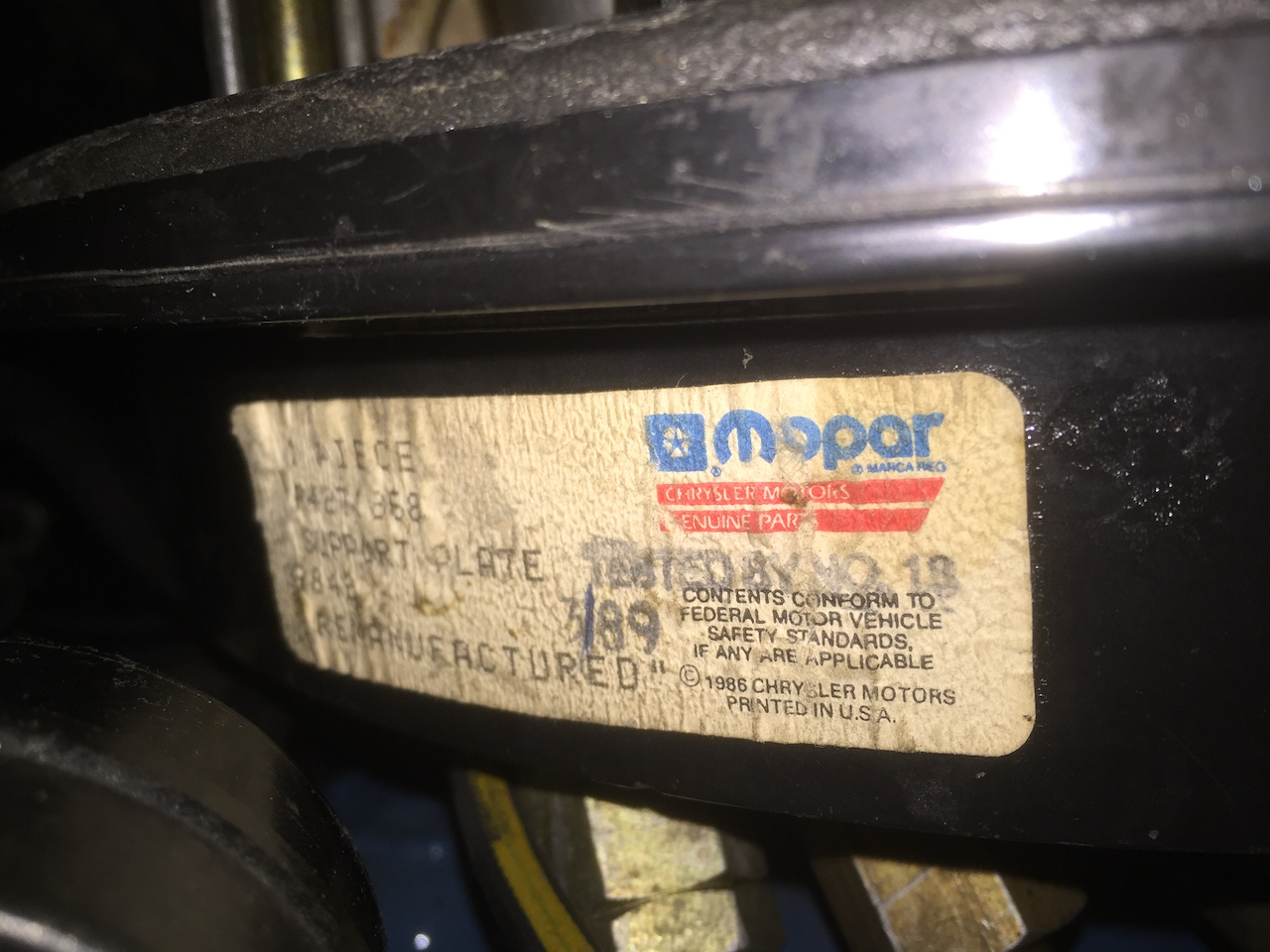1981 - 1983 Imperial EFI
I bought my 83 between my last final exam and graduation from a dealer near the college that had one on the showroom floor. Fortunately, they had one in the color I wanted, because Chrysler had stopped accepting orders.
My car had been ordered by an attorney who wanted it before the end of 82. Back then, before tax reform, __everyone__ bought expensive cars and wrote them off as a business expense. But since Isabella was not scheduled roll down the production line until nearly the end of January in 83, she was available.

Some of the design decision were made in order to not repeat the 1958 Bendix Electrojector debacle. One of the issues identified with the Electrojector system were the solenoid port fuel injectors; they were not fast enough. It took too much time for them to open and it took far too much time for them to close. The slow closing of the injectors was responsible for much of the drivability and poor fuel economy associated with the system. Chrysler therefore decided not to again made a port injected system. They created a throttle body based system with a continuous feed injector instead of a pulsed system.
The EFI problems boil down to three issues.
Components
Despite Chrysler's 1976 ELB debacle, the beancounters again bought electronic components that marginally met specification to save costs. These were used to build the CCC and the Power Module in the HSP. The engineers spec'ed quality parts, the RCA 1802 CPU, for example, went to Jupiter. The rest of the components, the commodity stuff, was marginal.
Training and Education
The dealership mechanics were in waaaaay over their heads in troubleshooting these systems. Most couldn't troubleshoot them and, as a result, threw parts at problems until they fixed the issue. Or, more usual, spent the warranty's book allowance of of time parts swapping, returning the car to the customer with a "It's better, not perfect. Bring it back if you still have problems." I recall having a problem with mine when she was just out of warranty. I knew what the problem was, explained it carefully to the service writer, and... they changed the wrong part! And charged me something like $1,500, about $3k in today's money. I had to order the correct part, which fixed the problem. I believe that was another $1,000. The problem was even worse in 81 when the dealer's people had zero experience.
Today's cars have advanced diagnostic equipment, which usually will output codes that tremendously simplify troubleshooting. Some diagnostic ability is still required to interpret the codes, but diagnosing is greatly simplified by today's automation.
Fuel & Ignition Maps
Under certain driving conditions, the system can't correctly optimize the A/F ratio and ignition timing. the engineers omitted a MAP sensor. And mostly they could infer accurate airflow from the throttle position and airflow sensors at whatever RPM the ignition was firing. But under some circumstances, the results were ambiguous. In that situation, the engine would either run poorly until the problem was resolved, or it may not be compliant with emissions standards. (This was in the pre-VW cheating days.) Chrysler sought a waiver from the EPA, but since they sought the waiver during the Mr. Peanut administration, they were unsuccessful. So the engines were programmed to run poorly when the CCC couldn't map the curve.
The secret is that in the late 80s, Chrysler finally got out of its corporate Lazy Boy and got to work on the fuel injection system. If they caught the problem earlier, the Imperials probably would have sold better.

Mopar pulled back as many cores for the ASD, CCC, and HSP as possible. They then rebuilt them with better spec components, no cold solder joints, etc. What they should have done from the beginning. These parts are nearly bulletproof. Well, bulletproof for Chrysler. If you are trying to repair one of these cars, look for rebuilt parts with a rebuild part number that's date coded in the late 1980s. I was able to get both a new spec CCC and HSP. My Isabella runs much, much better than one of her contemporaries with an old-fashioned, clunky carburetor.
